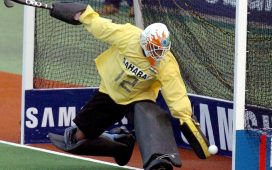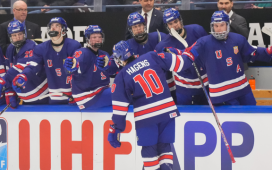According to a source, the NHL and NHL Players’ Association are putting the finishing touches on a memorandum of understanding that will lead to a new collective bargaining agreement that will guarantee labor peace until at least 2024-25.
The return to NHL Olympic participation and the right for players to opt out of this year’s playoffs are part of a new collective bargaining agreement and return-to-play plan that will go a long way to forging Don Fehr’s legacy with the NHL Players’ Association.
According to a source, the NHL and NHLPA have essentially reached a memorandum of understanding (MOU) and all the issues have been decided on a plan that will see them return to play in August and extend the current CBA by three years, which would guarantee labor peace until at least 2024-25. It’s not a great deal for the players and there’s a lot in there they won’t like about it. But they will likely hold their noses and overwhelmingly approve because the alternatives might be worse. In reality, the only option Fehr and the NHLPA have is to negotiate a CBA now in an environment where, as usual, the employers hold almost all the leverage.
According to a source, here is the framework of the deal that is being completed. It is subject to the approval of both the NHL’s board of governors and the players.
* The current CBA, which has two years remaining, will be extended for three years, expiring after the 2024-25 season.
* The upper limit of the salary cap will be frozen at $81.5 million for the 2020-21 and ’21-22 seasons. It will rise to $82.5 million in 2022-23 and $83.5 million in ’23-24 and they will be de-linked from revenue for the first time since the owners achieved cost certainty in 2005-06. The last year of the deal, 2024-25, could possibly re-link with revenues.
* The escrow cap for next season will be a maximum of 20 percent regardless of revenues, though it could end up being less. There will be a 10 percent deferral of compensation (salary and signing bonus) for every player, an amount that will be paid back to them in equal installments, subject to escrow, in the final three seasons of the deal. So in reality, players will have 30 percent taken off their salaries next season.
* The escrow cap for Year 2 of the deal (2021-22) will be 18 percent. The following year the escrow cap will be 12 percent, then nine percent in 2023-24.
* Olympic participation for the 2022 Winter Olympics in Beijing and the 2026 Games in Milan will be enshrined in the deal.
* Any player will be permitted to opt out of participating in the 2020 Stanley Cup playoffs for any reason and it will not affect his contract going forward.
The NHL recently adjusted its revenue totals from $3.9 billion down to $3.8 billion for this season so far. The players have received about $2.5 billion, meaning they’ve received almost 66 percent of revenues and the current CBA stipulates they are to receive 50 percent. Should the NHL be able to complete this year’s playoffs – and that’s still not a given – total revenues are expected to be $4.2 million. Working on a 50-50 split, that would leave the players about $400 million in arrears this season. Nobody really knows what next season will look like, but it could be reasonable to assume those player arrears could be as high as $1 billion after next season. And even though there are some agents and players who believe the NHL should eat some or all of those losses, that is simply not going to happen.
So the players have one of two choices. They could reject the CBA that is being proposed and not play out this season. That would send the upper end of the salary cap plunging to about $66 million, with an escrow the next two seasons at somewhere between 55 and 70 percent. Those two years would lead to the end of the current CBA and, likely, the mother of all lockouts in 2022.
This would hurt the owners as well, particularly the ones who are spending to the cap. Such a precipitous plunge in the cap would cause owners to have to dismantle their rosters to be cap compliant and they would certainly lose some star players in the process, but there’s no reason to believe the owners would not call the players’ bluff if that scenario is presented to them. Many of them are union-busting billionaires in real life and, while it would hurt them in the short-term, would likely be a blip on the screen in the long-term, particularly the way franchise values continue to increase.
And that’s why, warts and all, the players will almost certainly take this deal. Almost all of them will hate it. Even Fehr, the executive director of the NHLPA, probably hates it. But they also realize that given the circumstances, it’s probably the best they can do. The players would not have much of a case for keeping more than 50 percent of revenues, even with the COVID pandemic causing revenues to plummet. To be sure, the pandemic isn’t the players’ fault. But neither is it the owners’. And the two sides have a collective bargaining agreement that stipulates revenues, regardless of how high or low they are, are to be split 50-50.
If all goes well, the players will be able to dig their way out of this deficit within three years. By that time, there will be a new U.S. television deal in place and (fingers crossed) the devastating effects of the pandemic will be behind us. It’s not a perfect deal. From the players’ perspective it’s not even close to that and, in fact, will turn out to be another big win for the owners. But it’s probably the best they can do.
So let’s play some hockey, eh?
Want more in-depth features, analysis and an All-Access pass to the latest content? Subscribe to The Hockey News magazine.









